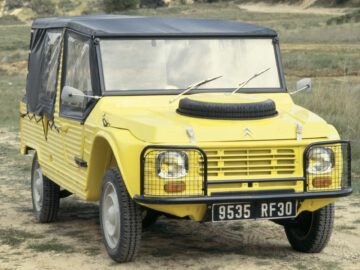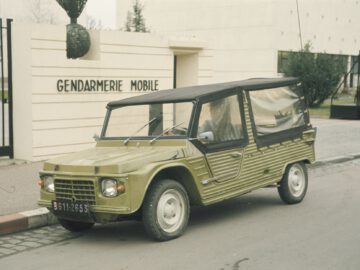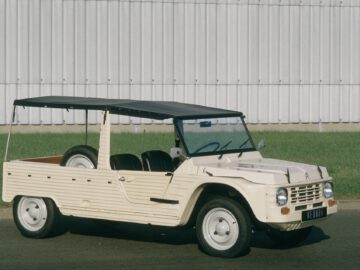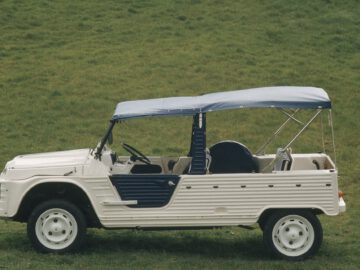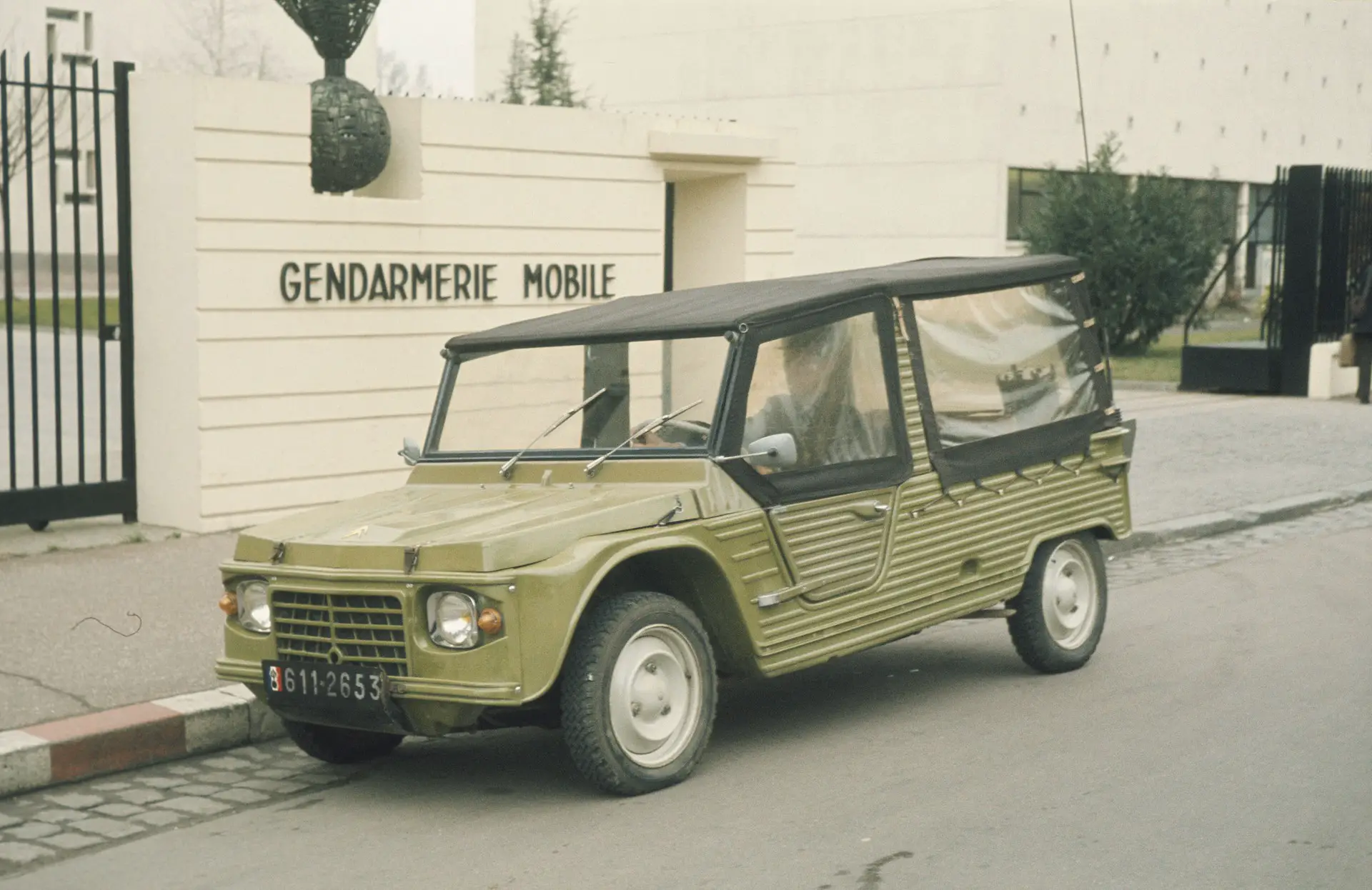Citroën Mehari blows out 55 candles: a retrospective
Designed by Roland de La Poype
The Citroën Mehare – with an open cargo box and retractable hood – was powered by an air-cooled two-cylinder engine with 21 to 24 kW (28 to 32 hp). The body was made of ABS plastic (acrylonitrile butadiene styrene) and designed by Roland de La Poype. Citroën based the Mehari on the platform of the Dyane and originally named the car Dyane 6 Mehari.
Nearly twenty years in production
The Mehari remained in production for nearly twenty years – from 1968 until 1987 – and eventually Citroën produced 144,953 Meharis, of which 1,213 were four-wheel-drive 4×4 Meharis. This made the Mehari a surprising success for such a vehicle. Citroën produced the Mehari primarily at its factory in Forest, Belgium, but the car was also built at seven other plants in France, Spain and Portugal.

For any terrain and any season
The name Mehari comes from a species of dromedary found in North Africa and the Sahara. These animals have been known to excel in rough terrain, have great perseverance and a low need for food and drink. The North African mehari can transport goods and people long distances through rough terrain, which is why their name fits so well with this versatile Citroën, as it can also master rough terrain and possesses unprecedented capabilities.
From a distance, the Mehari does not seem at all suitable for any season. It looks more like a small convertible or a beach car. But thanks to its retractable winter hood, it can be guarded against inclement weather and can be used year-round.
Versatile
The Citroën Mehari is very versatile and adaptable to almost any use. Part of the rear floor folds up to form a backrest for two additional rear seats. Thus, there is room for four people. In short, the car can be used for a variety of purposes.
The body of the Mehari is composed of only eleven easily repairable panels. The car is easy to clean both outside and inside with the garden hose. The car is easy to maintain and also cheap to repair. In doing so, Citroën used materials that were modern for the time.
The Mehari is a fine childhood memory for an entire generation. With its innovative bodywork, the Mehari became a true icon in the automotive world and beyond over the years.
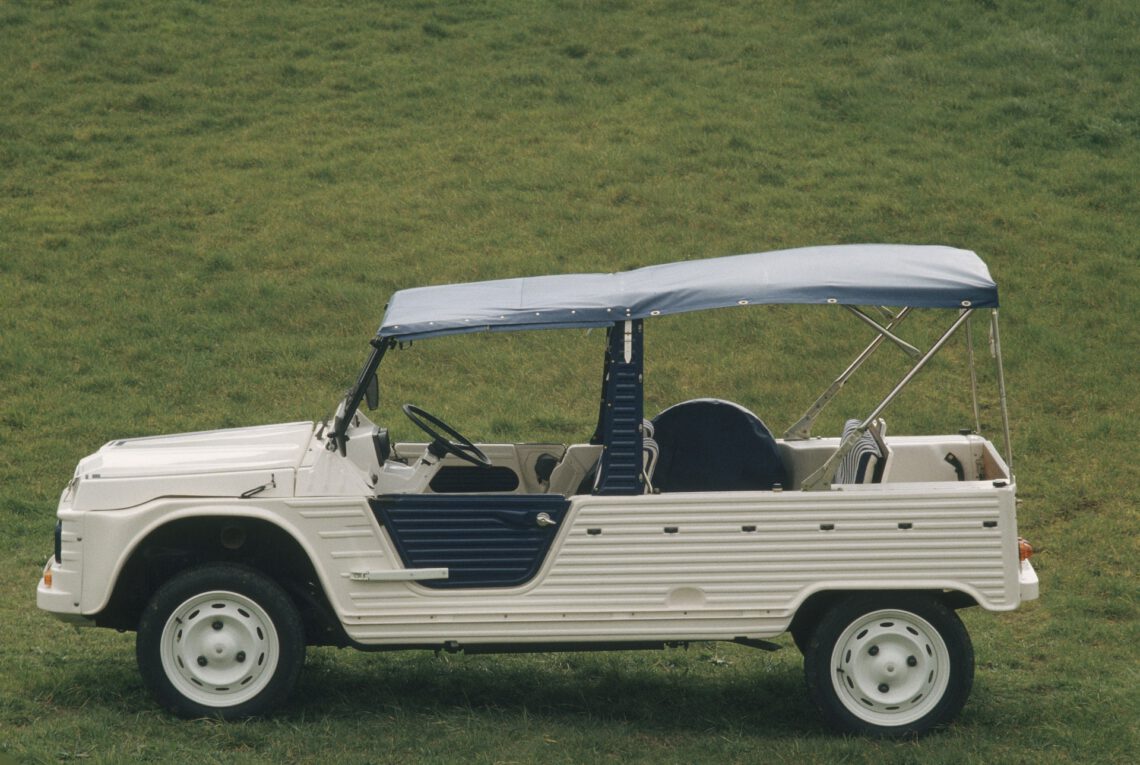
Three mythical versions
Although the Mehari was in production for nearly 20 years, only three special versions appeared – two of which were also produced in small numbers. In 1979, Citroën introduced the Mehari 4×4, which features all-wheel drive. In an edition of only 1,213 copies, this version offers an almost unprecedented freedom even today. In 1983, Citroën launched two special editions. The first was the Méhari Plage, in a bright yellow color and with a vacation look. This version was sold only in Spain and Portugal. The other special edition was the Mehari Azur, which appeared only for the French, Italian and Portuguese markets in an edition of only 700 copies.
Citroën Mehari in the military
The Mehari strongly attracted the attention of government agencies, such as police and customs, as well as managers of airports, horse racetracks and race tracks. And shopkeepers, craftsmen and individuals were attracted to the Citroën Mehari.
In the French army, the Mehari had a great, long-lasting career. The Army took delivery of as many as 11,457 Mehari from 1972 to 1987. The Mehari 4×4 even provided medical support. In the 1980 Rally Paris Dakar, medical teams used ten examples of the Mehari 4×4 for medical assistance along the route. Finally, the Mehari also had a film career, mainly thanks to the famous “Le gendarme de Saint Tropez” films by and with Louis de Funès.

